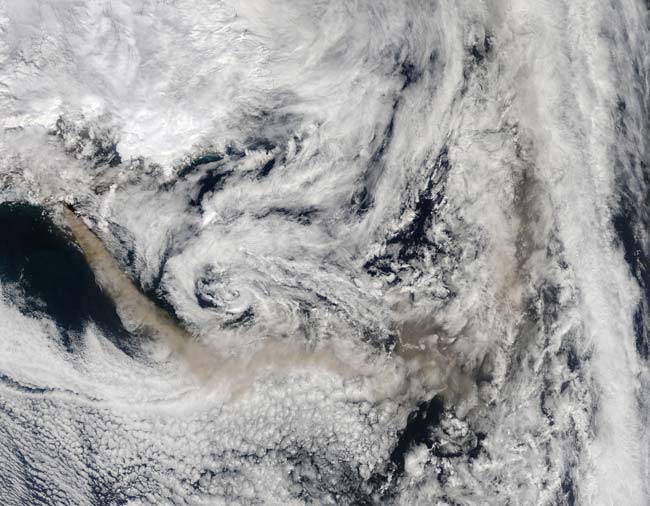Iceland Volcano Ash Plume Collides with Weather Front


The ash plume that has been emanating from Iceland's Eyjafjallajokull volcano for weeks has shifted direction after encountering a weather front, as seen by a NASA satellite.
On May 12, an occluded weather front swept past Eyjafjallajokull from east to west shifting winds and the direction of the ash plume. (An occluded front occurs when a cold front in the atmosphere overtakes a warm front, leading to shifts in the local wind direction.)
Images taken by the Moderate Resolution Imaging Spectroradiometer instrument aboard NASA's Terra satellite showed that the brown ash plume was mixing with the clouds associated with the weather system.
The wind shifts meant that the plume was no longer forcefully streaming to the south-southeast. The plume instead was briefly traveling in a south-southeast direction before mixing in with the clouds associated with the occluded front that now sits to the east of Iceland.
The ash plume from the continuing eruption has hampered European air travel off-and-on during recent weeks.
How long the volcano will continue to erupt for is difficult to predict.
- Gallery: Iceland Volcano's Fiery Sunsets
- How Much Longer Will the Eyjafjallajökull Eruption Last?
- The World's Weirdest Weather
Get the world’s most fascinating discoveries delivered straight to your inbox.



